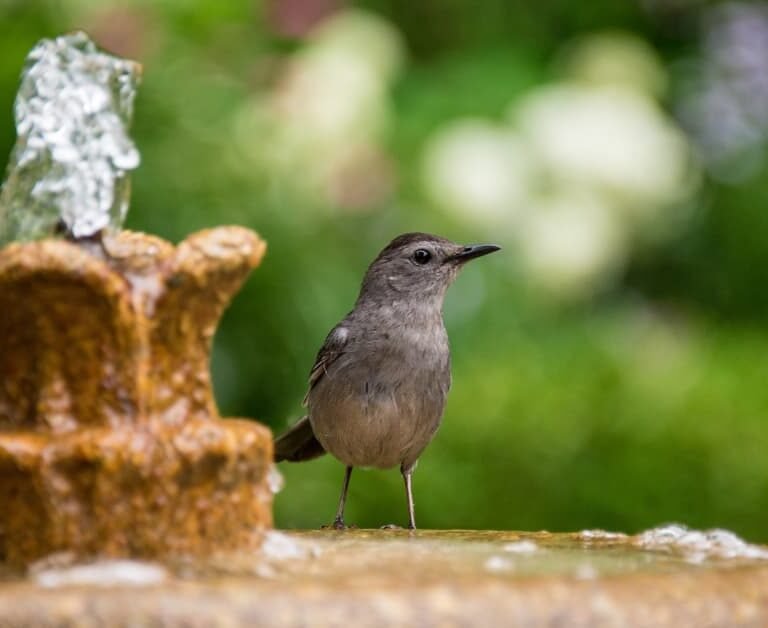
Ah, summer nights – the perfect time for outdoor gatherings, barbecues, and relaxing on the patio.
But with summer also comes the inevitable onslaught of bugs, which can quickly turn a pleasant evening into a frustrating one.
Whether it’s the constant buzzing of mosquitoes or the persistent bites of gnats and flies, insects can put a damper on any outdoor activity.
Fortunately, there are many ways to combat these pests and enjoy bug-free nights.
From eliminating attractants to using natural deterrents, and even planting certain flowers, there are a variety of strategies to keep bugs at bay.
We’ll explore the most effective methods for enjoying the outdoors and show you how to keep bugs away from the house at night.
So sit back, relax, and let’s dive into the world of bug-free nights.
Short Summary
- Eliminating attractants such as standing water, enclosed structures, and unmaintained water features is the first step to keeping bugs away.
- Planting certain types of flowers like chrysanthemums, mint, and basil can repel ants, while marigolds and lavender can help keep mosquitos away.
- Citronella candles, regular candles, oil lanterns, and yellowish lights can also repel insects.
- Bugs can be deterred naturally using nature’s own defense system, and there are a variety of options to keep bugs away, so no one has to constantly use bug spray.
Eliminating Attractants
The first step in keeping bugs away from your house at night is to eliminate attractants. This means getting rid of any standing water, which can be a common breeding ground for mosquitoes and other insects.
Enclosed structures like outdoor storage boxes or closets can also hold standing water, so it’s important to check these areas regularly and eliminate any water that may have accumulated.
Additionally, water features like fountains and pools can attract insects if not properly maintained, so it’s important to keep these features clean and free of debris.
Insects are also attracted to carbon monoxide and sweat from our bodies, so it’s important to take steps to minimize these attractants as well.
This can include using DIY solutions like citronella candles or professional pest control methods to eliminate any potential sources of carbon monoxide. Also, use bug spray or wear clothing that covers the skin to reduce sweat production.
By eliminating these attractants, you can significantly reduce the number of bugs around your home and enjoy bug-free nights outdoors.
Planting the Right Flowers
Planting the appropriate flowers in the correct proximity to the house can serve as a natural repellent for insects.
Certain types of flowers have been found to deter specific types of bugs.
For instance, chrysanthemums, mint, and basil are known to repel ants, while marigolds and lavender can help keep mosquitos away.
Petunias and herbs like chives and garlic have also been found to repel beetles.
Flower placement is also important in deterring insects. Flowers should be planted in the right proximity to the house so that the insects are deterred from coming near the house.
This can be achieved by planting the flowers in pots or planters close to the house or by creating a flower bed at the perimeter of the house.
By planting the right flowers in the right location, homeowners can enjoy bug-free nights and a beautiful garden.
Using Repellents
One effective method for deterring insects is through the use of natural or chemical repellents, which act as a shield against potential intruders, similar to how a moat protects a castle.
Natural repellents include citronella candles, essential oils, and herbs like mint, basil, and lavender.
On the other hand, chemical repellents contain ingredients like DEET, picaridin, and permethrin, which are highly effective in repelling insects but may have health and environmental concerns.
It is important to choose a repellent that suits your needs and preferences and to follow the instructions carefully to ensure safe and effective use.
To help you choose the best repellent for your needs, here is a table showing some common types of repellents and their pros and cons:
| Types of Repellents to Try | Pros | Cons |
|---|---|---|
| Citronella candles | Natural, pleasant scent, easy to use | Short-lasting, may not be effective for all insects |
| Essential oils | Natural, customizable, may have additional benefits | May have health and environmental concerns, not for use on the skin |
| DEET | Highly effective, long-lasting, widely available | May have health and environmental concerns, strong odor, can damage some materials |
| Picaridin | Effective, odorless, less irritating than DEET | Dilution and application can be tricky, and may not be as effective as chemical repellents |
| Permethrin | Long-lasting, can be applied to clothing and gear, effective against ticks and mosquitoes | Effective, odorless, and less irritating than DEET |
In addition to these options, you can also try making your own DIY repellent using natural ingredients like vinegar, garlic, and lemon.
However, it is important to note that homemade repellents may not be as effective as commercial products and may require more frequent reapplication.
With the right repellent and precautions, you can enjoy bug-free nights and make the most of your time outdoors.
Natural Deterrents
Natural deterrents can be an effective way to keep insects away from your outdoor living space.
DIY insecticides made from everyday household items such as vinegar, garlic, and essential oils can be a great alternative to chemical insecticides.
These natural repellents work by disrupting an insect’s sense of smell and by creating an unappealing environment that bugs want to avoid.
For example, a mixture of vinegar and water can be used to repel ants, while a blend of garlic and essential oils can keep mosquitoes and ticks at bay.
Aside from being eco-friendly and safe for pets and children, there are many benefits of using natural methods to deter insects.
For one, it is a cost-effective solution that can save you money in the long run.
Plus, you can customize your natural repellents to suit your specific needs and preferences.
Lastly, natural methods can be an enjoyable and educational experience that involves experimenting with different ingredients and techniques.
By using natural deterrents, you can create a bug-free environment that allows you to fully enjoy your outdoor space.
Evaluation and Choosing Options
When choosing the most effective method for deterring insects, it is important to consider factors such as the size of the area, the types of insects present, and the level of maintenance required.
Some options may work better for larger spaces, while others may be more suitable for smaller areas.
For example, a bug zapper may be effective for a small patio, but may not be as effective for a larger backyard.
Personal preferences also play a role in choosing the best solution. Some people may prefer natural options, while others may opt for chemical sprays.
To aid in decision-making, a table can be used to compare the pros and cons of different bug-repelling options.
The table below highlights three popular options: citronella candles, bug zappers, and mosquito nets.
While citronella candles may be a natural option, they may not be as effective as bug zappers or mosquito nets.
However, bug zappers may require more maintenance and may not be suitable for all outdoor spaces.
Ultimately, choosing the best bug-repelling option depends on personal preferences, the size of the area, and the types of insects present.
| Option | Pros | Cons |
|---|---|---|
| Citronella candles | Can be cumbersome to set up, and may not be aesthetically pleasing | May not be as effective as other options, requires regular use |
| Bug zappers | Effective, can cover larger areas | Requires maintenance, may not be suitable for all spaces |
| Mosquito nets | Effective, can be used indoors or outdoors | Can be cumbersome to set up, may not be aesthetically pleasing |
FAQs:
What are some common mistakes people make when trying to eliminate bug attractants?
Common bug attractant mistakes include not eliminating standing water, using bright lights, and planting flowers too close to the house. Natural repellent alternatives such as citronella candles, cedar mulch, and certain types of flowers can be effective.
Are there any flowers that should be avoided when planting to repel bugs?
When selecting flowers for bug-repelling purposes, it is important to choose the right plants.
Some bug-repelling plants include chrysanthemums, mint, basil, marigolds, lavender, petunias, chives, and garlic.
However, certain flowers should be avoided as they may attract bugs instead of repelling them. Flower selection is crucial for effective bug control.
How effective are citronella candles compared to other types of insect repellents?
Citronella candles have moderate effectiveness in repelling insects. Alternative options include yellowish-hued lights, planting insect-repelling flowers, using cedar mulch, and setting up a light perimeter.
Can natural deterrents be harmful to pets or children?
Natural deterrents for bugs may pose potential dangers to children and pets if not used properly. Alternative solutions include using non-toxic options like citronella candles or yellow lights. Safety concerns arise with chemical bug repellents, which should be used with caution.
How do you evaluate the effectiveness of different bug-repelling options and choose the best one for your needs?
Product comparison and DIY remedies are effective ways to evaluate bug-repelling options. Consider factors such as active ingredients, duration of effectiveness, and potential side effects. Test different options to determine the best fit for your needs.




